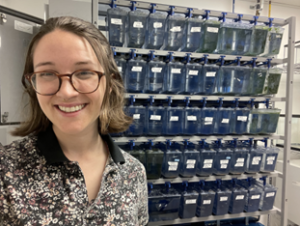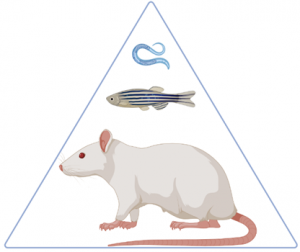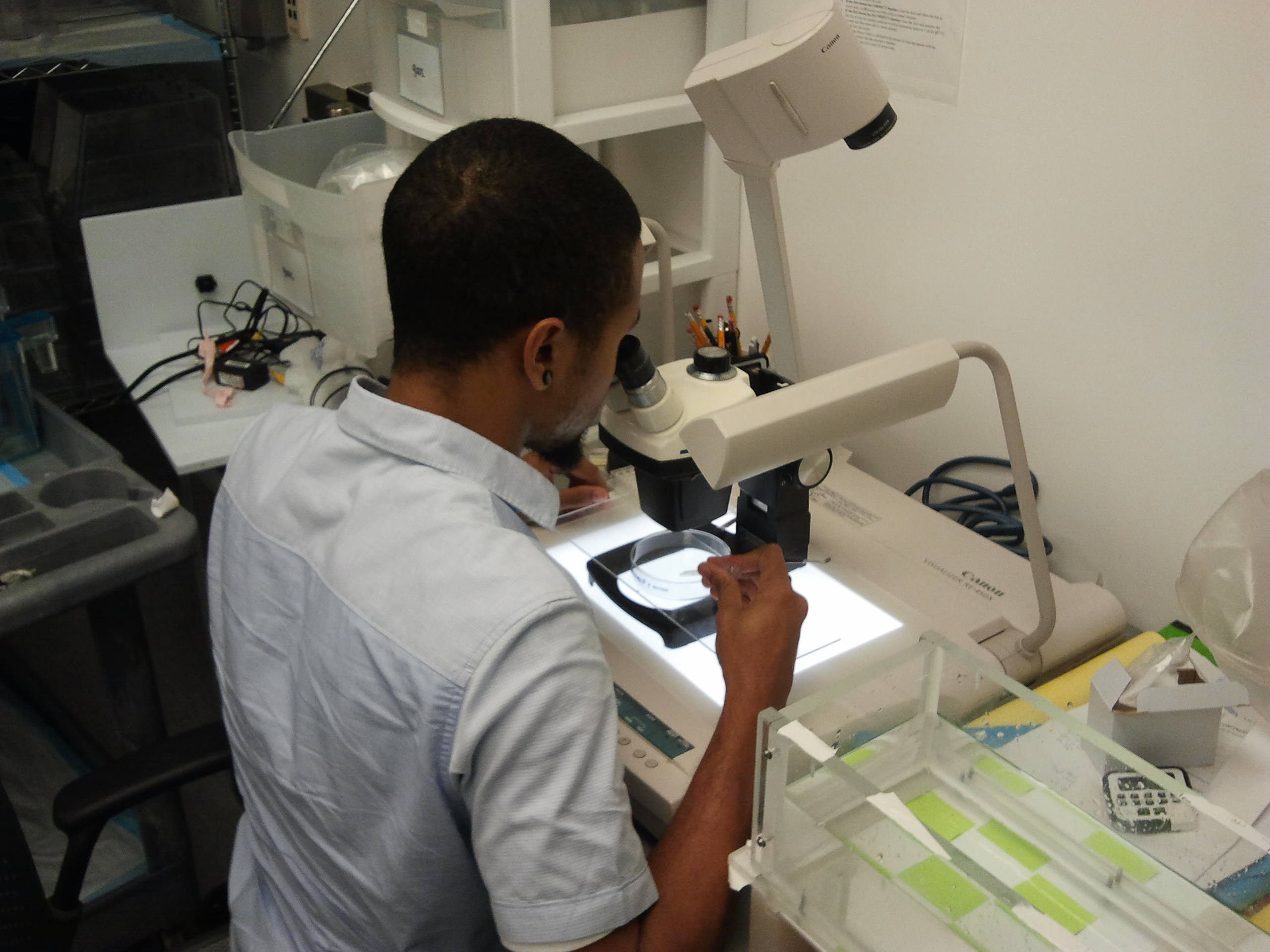By Kallie Davis, Summer Research Intern in Dr. Edward Levin’s Lab
Model organisms are an essential part of toxicology. While model organisms help us understand toxic substances and how they interact with living organisms, there are multiple options and considerations when selecting the most appropriate model. At the Duke University Superfund Research Center, a variety of animal models are used including Caenorhabditis elegans (C. elegans), a multicellular roundworm, and vertebrate models like zebrafish and rats. Given how different these animals are, what can each tell us? And why is it important to assess toxicological phenomena in multiple models?
As a Duke Superfund Center intern in Dr. Ed Levin’s lab, I worked with both zebrafish and rats on a variety of projects focused on neurobehavioral and cognitive effects following exposure to specific toxicants, such as lead (Pb), cadmium (Cd), and fluoranthene, a common polycyclic aromatic hydrocarbon. Dr. Levin’s lab specializes in assessing life-long effects resulting from these common environmental exposures to try to understand the role that toxic substances have on human cognition and behavior.
When dealing with behavior and the brain, it can get complicated very quickly. To deal with this complexity, a vertebrate model is the most appropriate to use since it encapsulates the entirety of a living organism and interactions within internal systems. Additionally, neurobehavioral responses, such as anxiety, activity, and social behavior resulting from an external stimulus can be easily measured using vertebrate models. For example, in a zebrafish model, a light stimulus is applied and removed in alternating light/dark phases in a 50-minute test which compares activity between treatment groups. This light/dark test is used in early stages of development (i.e., larval and juvenile) and can tell us about early-stage differences in neurobehavior.
In Dr. Levin’s lab, zebrafish and rat studies are run in parallel. This allows for the relationship and differences between models to be evaluated since different organisms will have varied responses to toxicants. Even within similar groups of organisms, species will have different responses to toxicants. For example, zebrafish and killifish may react differently to an environmental exposure due to differences in biological capabilities, life histories, genetics, etc. – a phenomenon which demonstrates differences in tolerance and sensitivity. Even within the human population, people can be more or less sensitive to a toxicant. People can be predisposed to cancer genetically, for example, but exposure to a carcinogen may increase the chance of a person developing cancer. Basically, how an organism reacts to toxicant exposure is dependent on many different types of factors. For example, certain protective mechanisms, such as metabolic enzymes which break a chemical down into a less toxic form may be present in one organism and not another; an organism may be able to adapt to a toxic environment more readily through rapid generation; or different physiologies may not allow for absorption of a toxicant in the first place, eliminating the interaction of the substance with its target within the body. This is where invertebrate models, such as C. elegans, are important, as they allow for the discovery of how a toxic substance is acting on an whole organism at a smaller scale. These studies can help determine what makes a substance toxic and give insight into potential therapeutic targets to treat negative effects which result from environmental exposures.
Overall, when used in tandem, as is done within the Duke Superfund Center, information derived from multiple models can be pieced together like a puzzle to determine major toxic effects, variation across/within taxa, and how toxic substances are causing adverse outcomes in an organism.







